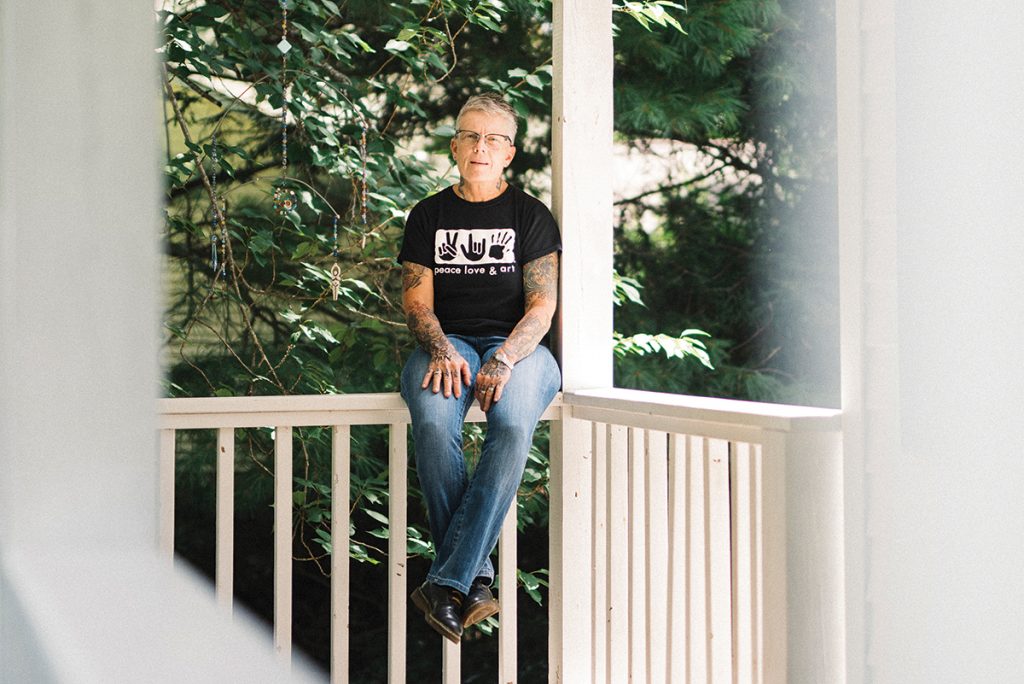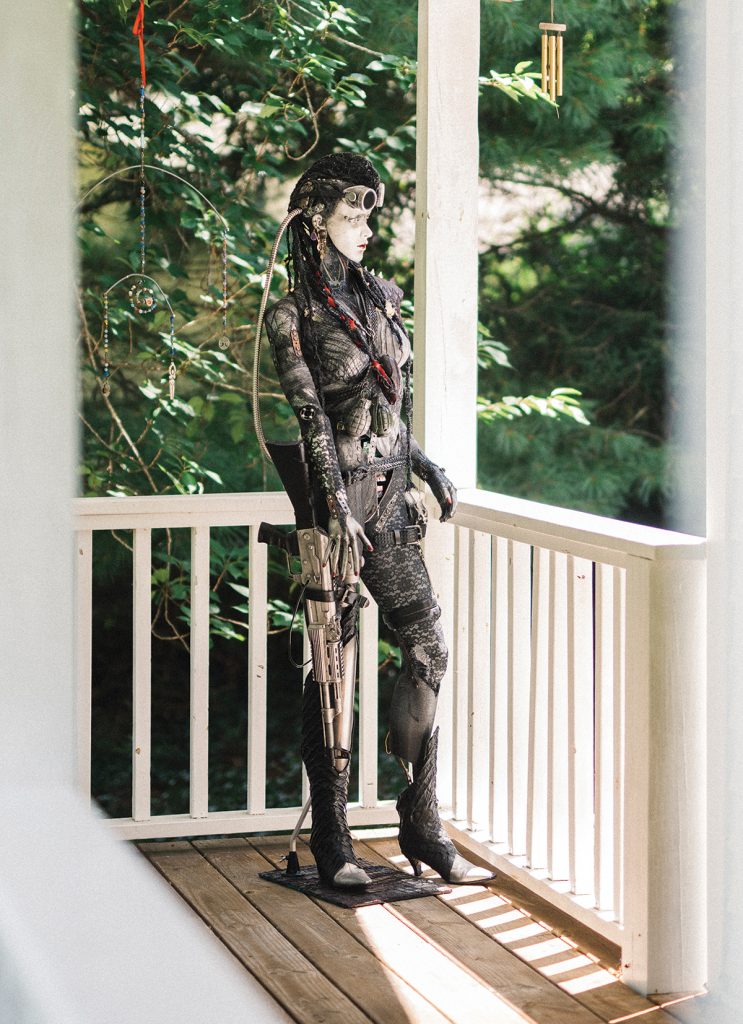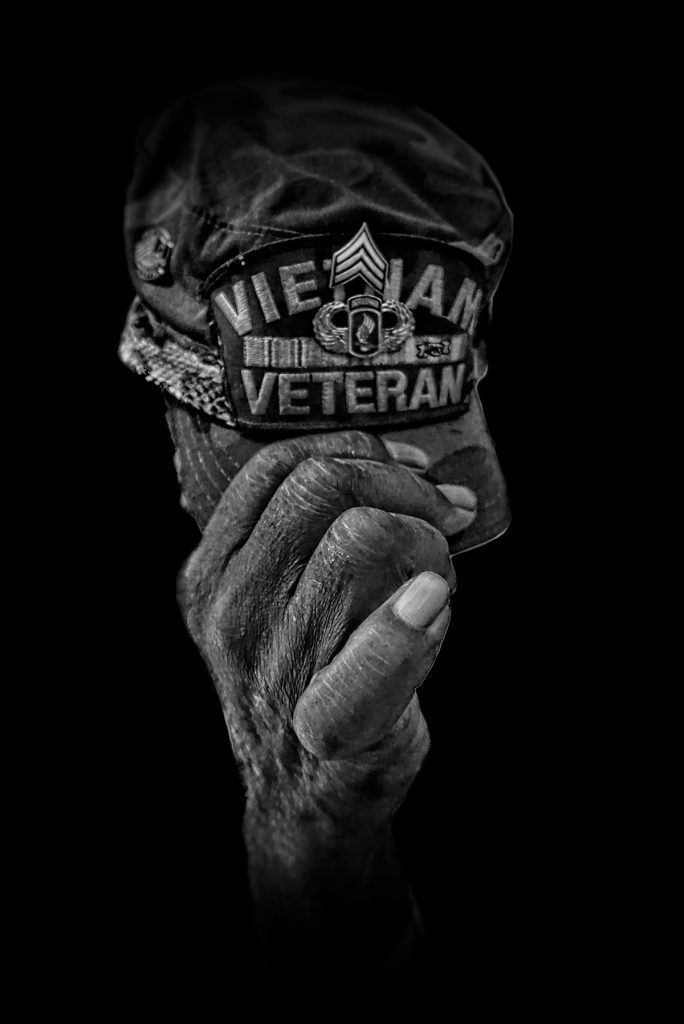As a child, Deborah Anderson was fascinated by pieces of animal skeletons she found in the woods. She’d take them home and try to put them back together like new. It’s not hard to trace that trajectory to her dual careers: She grew up to be both a full-time nurse and an assemblage sculptor/photographer.

Portrait by Clark Hodgin
Tell me about your latest assemblage pieces.
I start on a piece and it starts talking back to me, and it snowballs from there.
How do you conceptualize the designs?
I like working with mannequins. I’m looking at one now and she looks like something from Mad Max.
What are those conversations like?
(Laughter.) Often cathartic. I feel impelled to do it, because it calls to me and speaks to me.

How’d you get into photo art?
It’s like assemblage, but without the mess, and it’s a time-management thing. If I’m working on an assemblage piece and waiting for the glue to dry, I start manipulating digital photography. It comes from being a nurse. You have to manage your time well so patients are taken care of well. I rolled it over into my artwork.

You’ve spent your career working in long-term care and hospice. What has that taught you about life and death?
I’ve always thought of death as part of life. It’s unfortunate we can’t talk about it a little bit more and make it more of a reality instead of something to combat. When I was young, I was working as a nursing assistant, caring for nuns. When a sister was getting ready to die, they celebrated it as the culmination of a life well spent. Whatever your perspective is, death can be a joyful event.
But do some people see your artwork as dark?
I work a lot with skulls, and lots of people say my stuff is dark and morbid. But I don’t think it is. I’ve had people tell me I need to go to church and find God, because evidently my life is empty.

Photo by Clark Hodgin
How did that make you feel?
I thought, well, I’ve done my job as an artist. I’ve made them think. What’s that saying? “Art should disturb the comfortable and comfort the disturbed.”
Why do you photograph the hands of military veterans?
Those are pictures of guys I worked with every day at the VA [Medical Center]. I did it to honor them.

What did they think of the finished exhibit?
The guys? Oh my God, they loved it! At the unveiling, some started tearing up.
Why hands?
I find hands fascinating. They do so much, and we take them for granted. To establish a relationship with patients, one of the first things I look at is their hands. You can learn a lot and start a conversion, like, “What kind of work did you do?” That’s a segue into maybe holding their hand and letting them know that theirs are some pretty strong hands.
Deborah Anderson, Asheville. The artist is represented by Eco Depot Marketplace (408 Depot St., #100, ecodepotmarketplace.com). One of Anderson’s pieces will be included in the book Contempo Annual International Competition of Abstract & Contemporary Art, out in December. For more information, see ahdraart.com or on Instagram (@blanche6028) or Facebook: Debart 1021.
Unbelievable artist. Amazing.